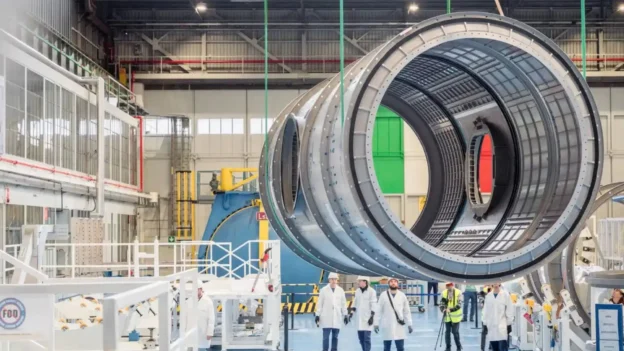The HALO (Habitation and Logistics Outpost) of the Gateway space station, one of the four modules intended for the stay and preparation of astronauts for lunar missions has taken a crucial step towards its launch. Earlier this year, welding of the module was completed in Italy, a significant achievement celebrated by NASA.

The journey of the HALO module to the lunar orbit
At the Thales Alenia Space facility, teams are carefully moving HALO to a new location to undergo a series of stress tests, essential to ensure the module’s integrity and safety. Once these tests are successfully passed, the module will be transported to Gilbert, Arizona. There, Northrop Grumman will be responsible for final outfitting of HALO prior to its launch into lunar orbit along with the Gateway power and propulsion element.
NASA, in collaboration with its international partners, will use Gateway to explore the enigmas of deep space. This space station represents the first human presence in lunar orbit and is an integral part of the Artemis campaign, which aims to return humans to the Moon and lay the groundwork for the first human missions to Mars.

HALO will undergo a series of stress tests. Source: Northrop Grumman
International collaboration on the construction of the HALO Module
Thales Alenia Space’s Thales Alenia Space’s participation in the construction of the HALO module module is only part of its contribution to the Gateway program. The company is also working on other critical components of the space station, underscoring the importance of international collaboration in space exploration.
In addition, the technological advances and knowledge gained through Gateway’s development will not only benefit lunar and Martian missions, but could also have applications on Earth, improving living technology and logistics in extreme environments.
Follow us on social networks and don’t miss any of our publications!
YouTube LinkedIn Facebook Instagram X
Source and photo: NASA

